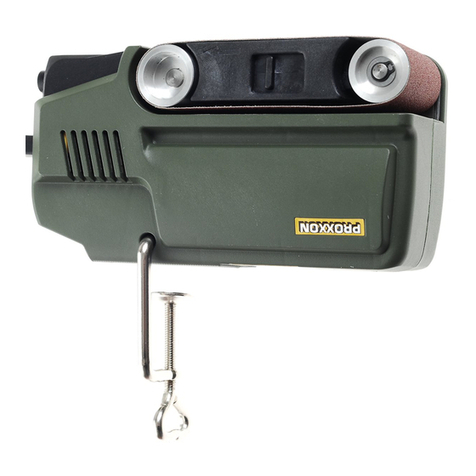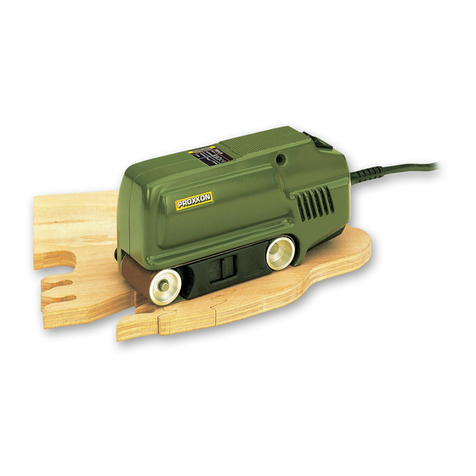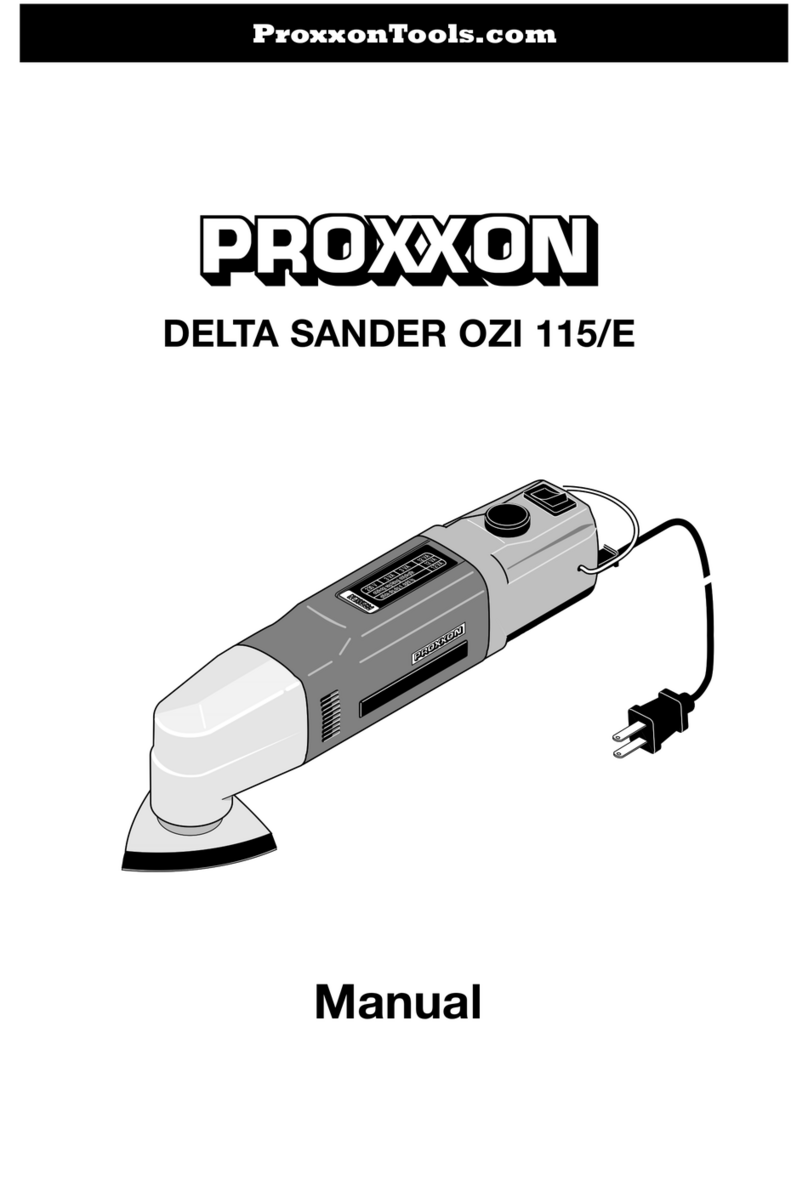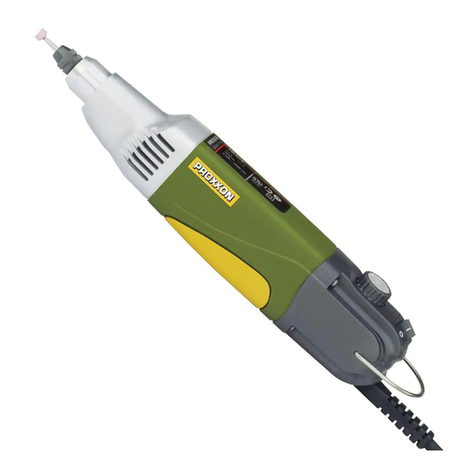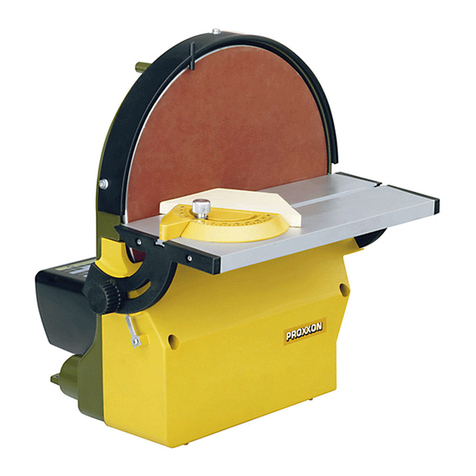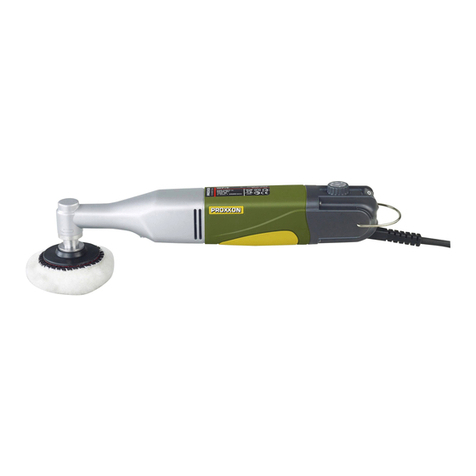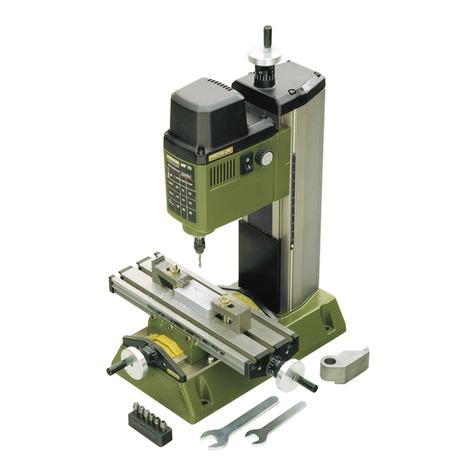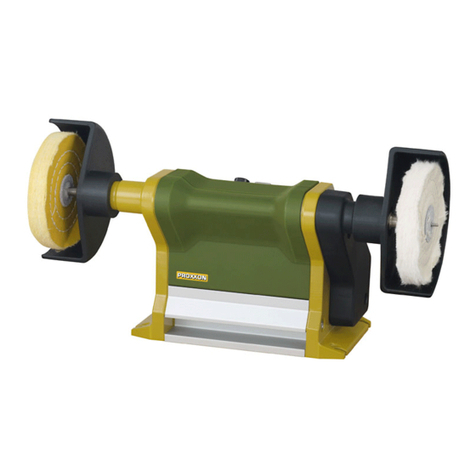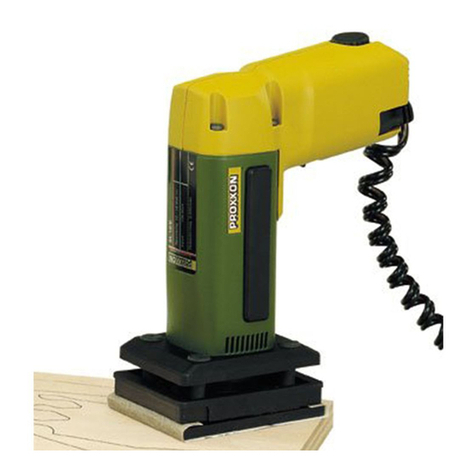- 12 -
h.) Wear prote tive equipment. Depending on
the appli ation, use full fa e prote tion, eye
prote tion or prote tive goggles. If appropri-
ate, wear a dust mask, hearing prote tion,
prote tive gloves or a spe ial apron apable
of stopping small abrasive and material par-
ti les. The eyes are to be protected from flying
debris generated during various operations.
Dust masks or respirators must filter the dust
generated during the operation. If you are
exposed to loud noise for a long time, you may
suffer hearing loss.
i.) Keep other people at a safe distan e away
from your work area. Anyone who enters the
working area must wear personal prote tive
equipment. Fragments of the work piece or
broken bits and cutters can fly away and cause
injuries even beyond the immediate area of
work.
j.) Hold the devi e only by its insulated grip sur-
fa es if you perform work where the bits and
utters ould onta t hidden power ables or
your own mains able. Contact with a live
cable can energize metal device parts and
cause electric shock.
k.) Keep the mains able away from rotating bits
and utters. If you lose control of the device,
the mains cable could be cut or snagged, and
your hand or your arm could get pulled into the
rotating bits and cutters.
l.) Never set down the power tool until the bits
and utters ome to a omplete stop. Turning
bits and cutters grab the depositing surface
and pull the power tool out of your control.
m.) Do not allow the power tool to run while you
are arrying it. Your clothing could get snagged
accidentally in the rotating bits and cutters,
causing the power tool to pierce your body.
n.) Regularly lean the ventilation slits of your
power tool. The motor fan sucks dust into the
housing and a strong accumulation of metal
dust can cause electrical hazards.
o.) Do not use the power tool in the vi inity of
ombustible materials. Sparks could ignite
these materials.
p.) Do not use bits and utters that require liquid
oolants. The use of water or other liquid
coolants can cause electric shock.
Ki kba k and related warnings
Kickback is a sudden reaction to a pinched or
snagged rotating wheel,sanding band, brush or
any other accessory. Pinchingorsnaggingcauses
rapid stallingofthe rotating accessory which in
turn causes the uncontrolledpower tooltobe
forced in the direction oppositeofthe accessory’s
rotation.
Forexample,ifanabrasive wheelissnaggedor
pinchedbythe workpiece, the edgeofthe wheel
thatisentering into the pinch point can dig into the
surface of thematerial causing the wheeltoclimb
outorkickout.Thewheelmayeitherjumptoward
or away from the operator, dependingondirection
of the wheel’smovementatthe pointofpinching.
Abrasive wheels may also break under thesecondi-
tions.
Kickback is theresult of power tool misuse and/or
incorrect operating procedures or conditions and
canbeavoidedbytakingproperprecautionsas
given below.
a) Maintainafirmgriponthepowertool and
position your body and armtoallowyou to
resist ki kba kfor es. The operator can con-
trol kickback forces, if proper precautions are
taken.
b) Use spe ial arewhen working orners,
sharp edges et . Avoid boun ing and snag-
gingthea essory. Corners, sharp edgesor
bouncing have a tendency to snag the rotating
accessory andcause lossofcontrol or kick-
back.
c) Do not atta hatoothed saw blade. Such
bladescreate frequentkickback and loss of
control.
d) Alwaysfeedthebit into thematerialinthe
same dire tionasthe uttingedgeis exiting
from the material(whi h is the same dire -
tion as the hips are thrown). Feeding the tool
in the wrong directioncauses the cutting edge
of the bittoclimb outof thework and pull the
toolinthe directionofthis feed.



